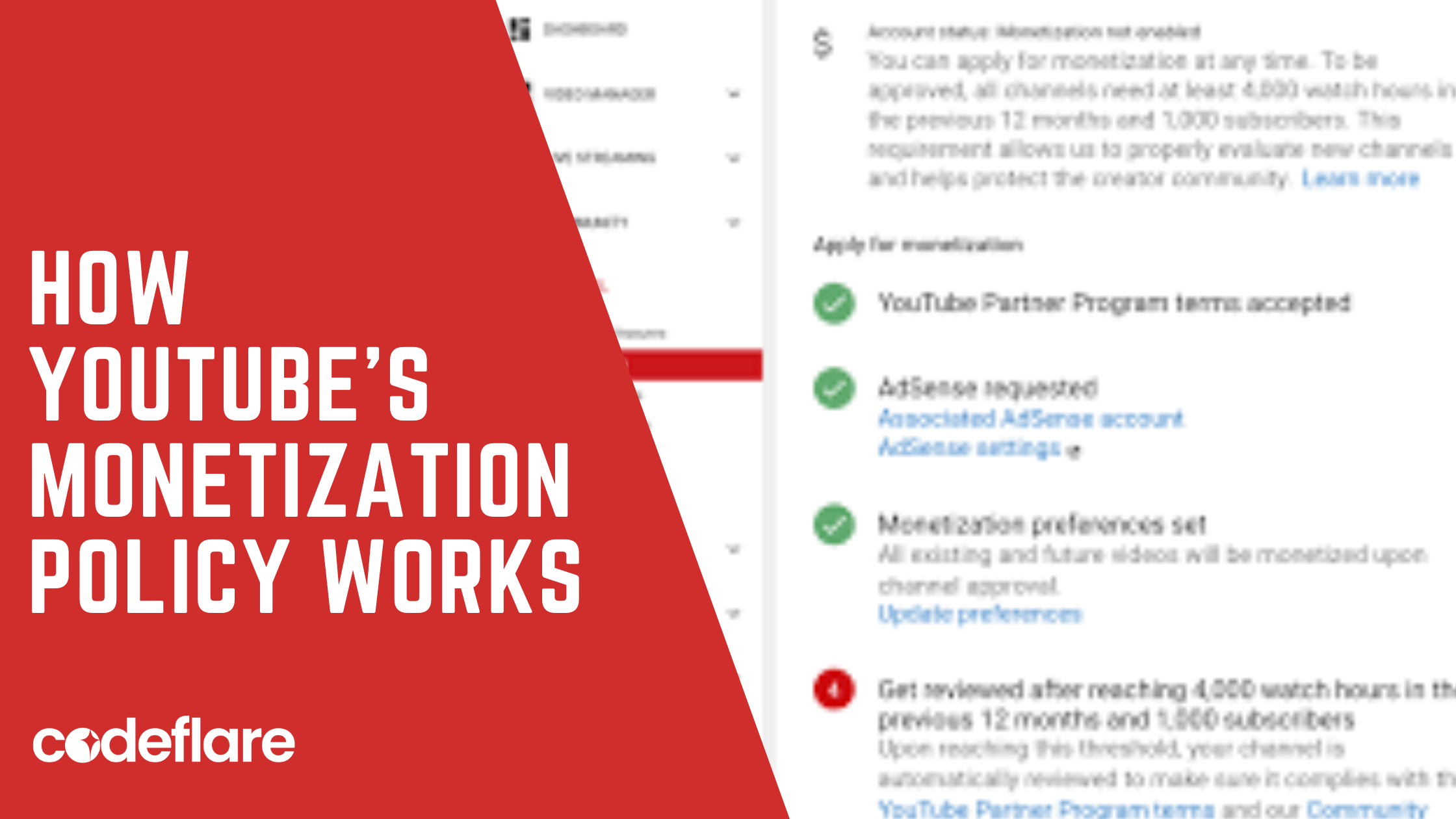
In recent years, YouTube has become not only a platform for entertainment but also a source of income for creators around the world. With its Partner Program and various monetization features, YouTube offers opportunities for creators to earn money from their content. In this article, we’ll delve into how YouTube’s monetization policy works, the requirements for eligibility, and the different ways creators can monetize their videos.
How YouTube Monetization Works:
- YouTube Partner Program (YPP):
- The YouTube Partner Program is the primary way for creators to monetize their content on the platform.
- To qualify for the YPP, creators must meet specific eligibility criteria, including:
- Having at least 1,000 subscribers.
- Accumulating 4,000 watch hours in the past 12 months.
- Complying with YouTube’s community guidelines and copyright policies.
- Once accepted into the YPP, creators can monetize their videos through various ad formats, including display ads, overlay ads, skippable video ads, and non-skippable video ads.
- Ad Revenue:
- Creators earn revenue from ads displayed on their videos through a revenue-sharing model with YouTube.
- The amount of revenue generated depends on factors such as ad engagement, viewer demographics, and advertiser demand.
- YouTube shares a portion of the ad revenue with creators, typically through a cost-per-mille (CPM) or cost-per-click (CPC) model.
- Channel Memberships:
- Creators with at least 30,000 subscribers are eligible to offer channel memberships to their viewers.
- Viewers can become channel members by paying a monthly subscription fee, which grants them access to exclusive perks such as badges, emojis, and members-only content.
- Creators receive a portion of the membership fees as revenue.
- Merchandise Shelf:
- Eligible creators can use the merchandise shelf feature to showcase and sell their branded merchandise directly on their YouTube channel.
- Viewers can browse and purchase merchandise such as clothing, accessories, and other products without leaving the YouTube platform.
- Creators earn revenue from merchandise sales, with YouTube facilitating the transaction and fulfillment process.
- Super Chat and Super Stickers:
- Creators hosting live streams can enable the Super Chat and Super Stickers features, allowing viewers to purchase highlighted messages or animated stickers during the stream.
- Super Chat and Super Stickers generate additional revenue for creators, with the purchased messages or stickers appearing prominently in the live chat.
Tips for Monetizing Successfully:
- Create High-Quality Content: Focus on producing engaging, original content that resonates with your audience and encourages viewer interaction.
- Promote Your Channel: Utilize social media, collaborations, and search engine optimization (SEO) techniques to attract more viewers and grow your subscriber base.
- Engage with Your Audience: Foster a sense of community by responding to comments, hosting live streams, and interacting with your viewers on social media.
- Diversify Revenue Streams: Explore different monetization options beyond ad revenue, such as channel memberships, merchandise sales, and sponsored content.
- Adhere to YouTube’s Policies: Familiarize yourself with YouTube’s community guidelines, copyright policies, and advertiser-friendly content guidelines to ensure compliance and avoid monetization issues.
YouTube’s monetization policy provides creators with the opportunity to turn their passion for content creation into a sustainable source of income. By understanding how monetization works and implementing effective strategies, creators can maximize their earning potential and build successful channels on the platform.
How Facebook’s Monetization Policy Really Works

Latest tech news and coding tips.



